Tatiana Klyueva
Homework for parents of the middle group on the topics “Wild Animals”, “Domestic Animals”, “Domestic Birds”
DEAR PARENTS!
« WILD ANIMALS»
wild animals. The child must learn: names animals and their young, their appearance, what parts their body consists of; where they live, what they eat.
words: wild animals, predators, herbivores, squirrel, hedgehog, wolf, bear, elk, badger, mouse, mole; den, lair, mink, hollow; skin, etc.
Tell your child about what they eat wild animals our forests and where they live (in a hole, den, lair, hollow, etc.)
Play with the children at games:
"Which?"
(selection of adjectives for the word ANIMALS»)
Herbivores, predators, angry, dangerous, timid, defenseless, weak, etc.
“Select, name, remember”
(pick up and name as many words as possible - signs, words - actions):
Bear (Which)- brown, huge, shaggy, clumsy, club-footed, strong.
Hare (Which) - …
Fox (which) - …
Bear (what is he doing)- waddles, roars, sleeps...
Fox (what is he doing) - …
Hare (what is he doing) - …
"Who with whom?"
It's getting cold and I'm getting sick animals and reached out to Doctor Aibolit. In the morning, the doctor noticed that a lot of people had gathered in the clearing near the hospital. animals. Look at the picture. Who came to Doctor Aibolit's clinic? (Fox with a fox cub. Hare with a little hare. Etc.)
"Count"
(agreement of numerals with nouns in gender, number and case):
One fox, two foxes, five foxes.
(squirrel, hedgehog, wolf, elk, badger, mouse, mole, beaver, wild boar, hare)
“Who was who?”
(fixing the names of the kids + logical thinking + creates, case)
There was a bear. (bear cub).
(squirrel, hedgehog, wolf, fox, elk, badger, mouse, mole,
beaver, wild boar, hare)
"Whose family?"
(learning possessive adjectives):
A wolf, a she-wolf and a wolf cub are a wolf family.
Hare, hare and little bunny -.
Fox, fox and little fox -.
She-bear, bear and cub -.
Elk, moose cow and elk calf -.
Boar, wild boar and little boar -.
Beaver, beaver and beaver -.
Hedgehog, hedgehog and hedgehog -.
“Whose cub?”
:
A fox cub is a fox cub
Little Wolf -. Elk calf -.
Little squirrel. Badger -.
Bunny. Beaver -.
Little mouse. Teddy bear -. Hedgehog.
Invite the children to write a story -
description about wild animals according to the scheme:
Body parts
What is the body covered with?
Where does he live?
What does it eat?
How do you spend the winter?
DEAR PARENTS!
THIS WEEK WE ARE WORKING ON THE TOPIC
« PETS»
Talk to your child about pets. The child must learn: names pets
and their young, what parts their body consists of; where they live, what they eat; what benefit does a person have for a person? animals.
The child must be able to use in his speech words: Pets, bull, cow, pig, horse, horse, goat, sheep, ram, dog, cat, cub, kennel, barn, farm, pigsty, stable, sheepfold, neigh, bark, moo, meow, horns, hooves, tail, mane , udder, mustache, etc.
Play with the kids:
“Who eats what?”
The horse eats oats and grass.
(cat, dog, goat, ram, sheep, pig, donkey)
“Who will be who?”
(fixing the names of the babies + logical thinking + instrumental case)
There will be a puppy. (dog)
(kid, kitten, calf, foal, piglet, lamb)
"Agree and repeat"
The kitten laps, and the kittens. (LakaUT)
The calf moos, and the calves.
The puppy runs, and the puppies.
The kid jumps, and the kids.
The piglet grunts, and the piglets.
The foal jumps, and the foals.
The lamb chews, and the lambs.
"Who's the boss?"
(use of possessive adjectives):
Whose muzzle does the HORSE have? - equine (tail, mane, legs, teeth, skin)
COW (horns, muzzle, tail, hooves, tongue)
DOG (fur, nose, tail, paws, bark, collar)
CAT (muzzle, claws, habits, tail, eyes, fur)
"Count"
(coordination of numerals with
nouns in gender, number and case):
One cow, two cows, five cows,
(cat, dog, goat, ram, sheep, pig, donkey, kid, kitten, calf, foal, piglet, lamb)
"Name the whole family"
mom dad cub cubs
sheep ram lamb lambs
horse … … …
cow … … …
pig … … …
goat.........
dog … … …
cat … … …
“Whose, whose, whose?”
tail, nose, head, ears
cow's cow's cow's
in a dog.........
in a cat.........
in a goat.........
at the ram.........
Give each other descriptive riddles
Jumps, chews, hides. Who is this?
Butting, chewing, bleating.
Sneaks, scratches, purrs.
Grazing, chewing, mooing.
Gnawing, guarding, barking.
DEAR PARENTS!
THIS WEEK WE ARE WORKING ON THE TOPIC
« POTENTIAL BIRD»
Talk to your child about poultry. Children must learn the names poultry and their chicks what parts their body consists of; where they live, what they eat; what benefits do they bring to a person; a person's love for poultry and animals.
The child must be able to use in his speech words: poultry, poultry farm, poultry farm, poultry house, guinea fowl, hen, rooster, chicken, goose, goose, gosling, duck, drake, turkey, turkey, chick, beak, body, comb, feather, paws, membranes, claws; cackles, cackles, quacks, crows.
Play with the kids:
“Who eats what?”
Duck eats algae, grass, worms
(rooster, chicken, goose, turkey)
“Who will be who?”
(fixing the names of chicks + logical thinking + instrumental case)
There will be a gosling. (goose or goose).
(duckling, turkey, chicken)
"Agree and repeat"
(use of singular and plural verbs):
The goose cackles, and the geese... Cackling
The hen clucks, and the chickens... cackle
The turkey chatters, and turkeys... chatter.
The rooster crows, and the roosters... crow.
The duck quacks, and the ducks... quack.
"Who's the boss?"
(use of possessive adjectives):
Whose comb does the COCK have? – cockerel
(tail, feathers, wing, beard, character)
Whose meat does CHICKEN have? – chicken
Whose feet does the DUCK have? -duck
(beak, feather, paw)
Whose beak does the GOOSE have? -goose
(meat, leather, fluff, feathers)
Whose feather does the TURKEY have? - turkey
"Count"
(coordination of numerals with nouns in gender, number and preference):
One duck, two ducks, five ducks.
(goose, rooster, hen, drake, turkey, turkey, duckling, gosling, chick, turkey)
Ask your child to write a story about any poultry
Body parts
What is the body covered with?
Where does he live?
Benefit to man
Give the children riddles
Make riddles.
Clucking, clucking, calling the children together,
He gathers everyone under his wing. (Chicken)
A tail with patterns, boots with spurs.
I wake everyone up, even though I don’t wind the clock. (Rooster)
He appeared in a yellow fur coat,
Goodbye, two shells. (Chick)
Red paws, pinching the heels,
Run without looking back. (Goose)
The barrel is rolling, there is not a knot in it. (Egg)
Natalya Bazhitova
Assignments from a speech therapist to a teacher of a senior speech therapy group on the lexical topic “Poultry. Pets"
October – 1 week.
Topic of the week: « Animal world» .
Lexical topic: « Poultry. Pets» .
(Senior group.)
Program content: expanding ideas about pets, birds their appearance and lifestyle (about their behavior, what they eat, what benefits they bring to people, familiarization with the work of people in caring for pets and birds, upbringing caring attitude towards animals.
Introduce into active speech.
Nouns: cat, cat, kitten, dog, puppy, cow, bull, calf, goat, goat, kid, horse, horse, foal, pig, wild boar, piglet, sheep, ram, lamb, rabbit, rabbit, baby rabbit; duck, drake, duckling, goose, gosling, hen, rooster, chick, turkey, turkey hen, etc.
Adjectives: fluffy, smooth, horned, fierce, affectionate, vicious, stubborn, fleet-footed, dexterous, clumsy, nimble.
Verbs: meow, bark, growl, moo, grunt, guard, guard, frolic, play, hatch, hatch, graze, swim, feed, squeal, milk.
Group assignments.
1. Articulation gymnastics: complex No. 3.
2. Finger gymnastics.
"Naughty Kitten".
Kitten calling mommy:
Meow meow meow meow.
(Rhythmically connect the fingers of both hands.)
He didn't drink milk:
Little by little, little by little.
(Cross fingers, raise and lower rhythmically.)
Mom will feed you milk:
Mur-mur-mur, pur-pur-mur.
(They stroke their palms rhythmically.)
Will curl up small in a ball:
Ur-ur-ur, ur-ur-ur.
(Rhythmically stroke fist on fist.)
Then he will play with the ball:
Tsap-tsap-tsap, tsap-tsap-tsap.
(They rhythmically clench and unclench their fingers.)
And the thread will quickly unwind:
Up-up-up, up-up-up.
(Make circular movements with your hands in front of you.)
3. Breathing exercises: complex No. 3.
4. Gross motor skills (physical minute):,
Exercise "Kitty".
That's what a cat is
(They're coming "feline" step.)
round face,
(Stroke the face.)
And on every paw
Scratchy claws.
(Depict claws.)
All his toys -
Cube and reel.
(Jumping in place.)
A cat is like a ball
Jumps around the apartment.
(Jump one after another in a circle.)
5. Tasks on the development of phonetic-phonemic hearing and perception.
"Who said?"
The child closes his eyes, and one of the children names one of the cubs pets. The child must guess who spoke.
"Woodpecker".
An adult taps out different rhythms, alternating quiet and loud beats. The child must repeat after him.
6. Lexical development tasks-grammatical structure of speech.
Exercise "Pick a sign" (to be able to match a noun with a word - a sign of an object).
Cat - (what...
Puppy - (what...
Foals – (what...
Calves – (what... etc.
Exercise “Who has who?”(extension lexical reserves for the studied topic).
The cow has calves.
The horse has foals.
The sheep has lambs.
The cat has kittens.
The dog has puppies, etc.
Exercise “Who eats what? (vocabulary development, agreement of nouns with verbs).
The cow is chewing.
The dog is gnawing.
The cat is lapping.
7. Tasks on the development of coherent speech.
Guessing riddles by lexical topic.
Reading fiction followed by discussion.
N. Garin-Mikhailovsky "Theme and the Bug".
V. Suteev “Who said "Meow"?».
A. Shibaev “Who becomes who?”.
K. Chukovsky "Confusion".
Source:
1. Corrective- speech therapy working with children 5 – 7 years: block-thematic planning / author. -composition E. F. Kurmaeva. – Volgograd: Teacher, 2013. – 191 p.
2. Internet resource.
3, Krupenchuk O. I. Teach me to speak correctly! Comprehensive Methods of preparing a child for school. – St. Petersburg: Publishing House "Litera", 2015. – 208 p.: ill. – (Series "Lessons speech therapist» ).
Publications on the topic:
Summary of the final event “In the poultry yard” on the lexical topic “Poultry” in the 8th type correctional group Purpose of the event: To consolidate children's understanding of poultry. Form an emotional response to the proposed game situation, encourage.
Finger gymnastics DOMESTIC ANIMALS The cow is happy with her calves. Bend the fingers one by one, first the thumb, The sheep is happy.
Homework on the lexical topic “Professions. Seamstress" TOPIC “Professions. Seamstress" 1. Words to expand vocabulary: profession, work, atelier, factory, seamstress, dressmaker, clothes, fabric, button.
Summary of a lesson on speech development and physical fitness in a senior speech therapy group using ICT “Pets” MUNICIPAL BUDGETARY PRESCHOOL EDUCATIONAL INSTITUTION "Combined kindergarten" Ust-Omchug village Lesson notes.
From the experience of working with older preschoolers in a speech therapy group on the lexical topic “Pets” From the experience of working with older preschoolers in a speech therapy group on the lexical topic “Pets.” During the preliminary work on.
Summary of a speech therapy lesson on the lexical topic “Pets” in the senior group Objectives: Correctional and educational: - clarify and activate children’s vocabulary on the topic “Pets”; - learn to use a preposition.






















 Back forward
Back forward
Attention! Slide previews are for informational purposes only and may not represent all the features of the presentation. If you are interested in this work, please download the full version.
Children should know:
- the concept of “poultry”;
- what is the name of the room where poultry lives;
- what do these birds eat;
- names of body parts, what it is covered with (distinguish between different poultry birds by appearance, their habits);
- about the benefits of poultry for humans;
- Why do people raise poultry?
Expanding children's vocabulary:
- Titles: duck, drake, goose, goose, gosling, turkey, turkey poult, hen, rooster, chick, body, tail, comb, paws, head, eyes, spurs, plumage, wings, membranes, claws, crest, beard, beak , house, person, grain, seeds, crumbs, chicks, eggs, meat, chicken coop, perch, down jacket, pillow, blanket;
- Signs: beautiful, playful, cocky, lively, dexterous, brave, fast, warlike, colorful, big, domestic, waterfowl, flying, flightless, fluffy, yellow-mouthed, motley, pockmarked, long, sharp;
- Actions: peck, drink, fly, swim, scream, clean, clap, waddle, walk, run, wave, grow, look after, hatch, hatch, protect, crow, cackle, cackle, hiss, swoop, squeak, take care.
Task “Who is this?”
Show pictures of poultry to the child and say: “The poultry depicted here is a rooster, a chicken, a duck, a drake, a goose, a goose, a turkey, a turkey.
Questions:
Show where the duck, chicken, goose, drake, etc. are.
Show me in the order I tell you: drake, turkey, chicken; rooster, duck, goose.
Assignment “What benefits do poultry bring?”
Tell us why birds are called domesticated and what benefits they bring to humans.
Tell and let your child listen to who gives the following voice:
- “The rooster - “cuckoo-ka-re-ku” - crows.
- The chicken - “ko-ko-ko” - clucks.
- The goose - “ha-ga-ha” - cackles.
- The turkey - “bl-bl-bl” - is swamping.
- Duck - “quack-quack-quack” - quacks.
Show who shouts “ko-ko-ko”, “quack-quack-quack”, “ha-ha-ga”, etc.
Tell me, who's cackling? Who's quackin'? Who's cackling? Who's crowing? Who's bobbing?
Continue: “Duck - ... (quacks)”, “Goose - ...”, “Rooster - ...”, “Turkey - ...”, “Chicken - ...”, etc.
Task “Chicks”
Tell your child what the chicks of poultry are called: a duck has ducklings (duckling), a hen has chicks (chicken), etc.
Show me where the duckling is? Where's the chicken? Where is the gosling? Where's the turkey?
Name the baby birds yourself. For example, a duck has a duckling (ducklings), a goose has a gosling (goslings), etc.
Task “Parents of chicks”
Tell us what the “parents” of the chicks are called: the chicken’s mother is a hen, the father is a rooster; The gosling's mother is a goose, and his father is a goose; The turkey's mother is a turkey, and her father is a turkey.
Show the goose, drake, rooster, chicken.
Name the “parents” of all the chicks:
- The gosling's mother is ... (goose), father is ...
- The duckling's mother is ..., father is ...
- The chicken's mother is ..., father is ...
- The turkey's mother is ..., father is ...
Task “Body parts of poultry”.
Show your child the domestic birds and describe them.
For example:
- “Here is a rooster. It has a head, beak, neck, torso, wings, legs. The body is covered with feathers. On the head there is a red comb and beard. There are sharp spurs on the legs...”
- “Here is a goose. He has two paws. The paws have membranes between the toes for swimming. The goose’s beak is wide and oval, like a scoop...”
Show where the chicken's wings, tail, paws, beak, etc. are. This work is carried out with images of all birds.
Name the body parts that a goose, a rooster and other birds have.
- “True or not?” Clap your hands if I say something wrong and correct me.
For example:
- “The duck has a beautiful red comb on its head.”
- “The rooster has three legs.”
- “Chickens have webbed feet.”
- “The goose can’t swim.”
- “A rooster is a waterfowl.”
- “How do birds differ from animals?” Consider the diagram.
The task “Who floats on water? Who walks the earth?
Ducks, drakes, geese, and geese swim on the water. These are waterfowl. They have webbed feet.
A chicken walks on the ground; it cannot swim.
The rooster walks on the ground, he cannot swim.
A turkey walks on the ground; it cannot swim.
The task “What first, what then?”
Tell me what happens first, what happens next?
First, the chicken lays an egg. A chicken emerges from it. The chick grows up and becomes a cockerel or hen.
The task “Whose feathers?”
Look at the illustrations with your child and tell him which feathers belong to which birds.
For example:
- “This feather is a duck feather. The duck lost it.”
- “This feather is a turkey feather. The turkey lost it.”
- “This feather is a rooster’s. The rooster lost it.”
Task “Find the extra picture.”
Determine which picture is the odd one out and why.
- “There is an extra crow because it is a wild bird, and all other birds are domestic.”
The task “Is Dunno Right?”
- “Eagle, rooster, goose are domestic birds.”
(No, I’m wrong. A rooster and a goose are domestic birds, and an eagle is a wild bird.)
- “Chicken, pigeon, turkey are domestic birds.”
(No, Dunno said it wrong. Chicken and turkey are domestic birds, and a pigeon is a wild bird.)
“Guess the riddle” task.
Clumsy, waterfowl. She has ducklings. Who is this? (Duck)
Swims, hisses, cackles. She has goslings. Who is this? (Goose).
Task “Come up with a riddle yourself.”
Come up with a riddle yourself according to plan:
- What does this bird look like? (describer her)
- What can she do?
- What is the name of her cub?
- Who is this?
Task “Look at the picture, count the birds.”
One turkey, two turkeys, three turkeys.
One rooster, two hens, three chicks.
Literature.
- E.A. Brezhnev, N.V. Brezhnev “I want to know everything. Part 1. The world around us.” Moscow, “Vlados”, 2003
- EAT. Kosinova “My first book of knowledge. Exercises for speech development.” Moscow, “Eksmo”, 2004
Review with your child illustrations depicting poultry and their families (hen - rooster - chickens, duck - drake - ducklings, goose - goose - goslings, turkey - turkey - poults);
Explain to the child that these birds are called domestic birds, why they are called that;
Fix the names of birds and words that denote and define their appearance and habits;
Find out where they live, what they eat and what benefits they bring (eggs, feathers, meat), how people care for them;
Talk about the profession of a poultry worker;
If possible, consider these birds in nature.
Exercise 2. Guess the riddle and learn it by choice.
He clucks, clucks, calls the children, gathers everyone under his wing. (Chicken)
A tail with patterns, boots with spurs. I wake everyone up, even though I don’t wind the clock. (Rooster)
He appeared in a yellow fur coat, goodbye, two shells. (Chick)
Red paws, pinching your heels, run without looking back. (Goose)
The barrel is rolling, there is not a knot on it. (Egg)
Task 3. Didactic game "Guess who it is." Where, whack, whack, she went off into the bushes. (Chicken) I'm guarding the ka-ka-re-ku! (Rooster) Drink-drink-drink - drink water! (Chicken) Quack-quack - I'm looking for a worm! (Duck)
Task 4. Didactic game “Who Talks How” (an exercise in word formation): duck (quack-quack) - quacks; the goose (ha-ha) cackles, the rooster (...) - ..., the chicken (...) - ... .
Task 5. Didactic game “One - many” (formation of the plural of a noun): chicken - chickens, hen - chickens, turkey - ..., goose - ..., duck - ....
Task 6. Didactic game “Who has who” (an exercise in word formation).
Singular nouns: duck has duckling, goose has ..., turkey has ....
Plural nouns: duck - ducklings, goose - ..., turkey - ....
Exercise 7. Didactic game “Who moves how”: the duck (what is it doing?) - walks, swims, flies; turkey (...) - ..., chicken (...) - ... .
Task 8. Didactic game “Correct the mistake” (for logical thinking): the duck has goslings; the turkey has chickens; the chicken has ducklings; the goose has turkey poults.
Task 9. Write a descriptive story about poultry according to the following plan: Who is it?
What is the appearance like?
What habits?
Who are the babies of this bird?
What does it eat?
What benefits does it bring?
Task 10. Exercise for fingers.
Ducklings
First, second - the ducklings were walking. The third, fourth - for water. And the fifth trudged behind them, the sixth ran behind. But the seventh fell behind them, and the eighth was already tired. And the ninth caught up with everyone, and the tenth one was scared, He squeaked loudly: “Peep-pee-pee!” - “No food, we’re nearby, look!” Task 11. The chicken went out for a walk, to nibble some fresh grass, And behind her are chickens - yellow kids. "Ko-ko-ko, ko-ko-ko, don't go far, Row with your paws, look for grains!” In the poultry yard Our chickens in the morning - quack-quack-quack, quack-quack-quack! Our geese by the pond - ha-ha-ha, ha-ha-ha! And the turkey in the middle of the yard - ball-ball-ball! Bullshit! Our walks up - groo-groo-groo, groo-groo-groo! Our chickens out the window - co-co-co, co-co-co! And how Petya the Cockerel will sing to us early in the morning “Ku-ka-re-ku!” (A. Barto) Question. Who lives in the poultry yard? Task 12. |
 Theme "Poultry"
Theme "Poultry" Review with your child illustrations depicting poultry and their families (hen - rooster - chickens, duck - drake - ducklings, goose - goose - goslings, turkey - turkey - poults);
Explain to the child that these birds are called domestic birds, why they are called that;
Fix the names of birds and words that denote and define their appearance and habits;
Find out where they live, what they eat and what benefits they bring (eggs, feathers, meat), how people care for them;
Talk about the profession of a poultry worker;
If possible, consider these birds in nature.
Task 2. Guess the riddle and learn by choice.
Clucking, clucking, calling the children together,
He gathers everyone under his wing. (Chicken)
A tail with patterns, boots with spurs.
I wake everyone up, even though I don’t wind the clock. (Rooster)
He appeared in a yellow fur coat,
goodbye, two shells. (Chick)
Red paws, pinching the heels,
run without looking back. (Goose)
The barrel is rolling
There's not a knot on it. (Egg)
Task 3. Didactic game "Who talks like that" (word formation exercise): duck (quack-quack) - quacks; the goose (ha-ha) cackles, the rooster (...) - ..., the chicken (...) - ... .
Task 4. Didactic game "One is many" (formation of the plural of a noun): chicken - chickens, hen - chickens, turkey - ..., goose - ..., duck - ....
Task 5. Didactic game "Who has who" (word formation exercise).
Singular nouns: duck has duckling, goose has ..., turkey has ....
Plural nouns: duck - ducklings, goose - ..., turkey - ....
Task 6. Didactic game “Who moves how”: duck (what is it doing?) - walks, swims, flies; turkey (...) - ..., chicken (...) - ... .
Task 7. Didactic game "Correct the mistake" (for logical thinking): the duck has goslings; the turkey has chickens; the chicken has ducklings; the goose has turkey poults.
Task 8. Exercise for fingers "Ducklings."
First, second - the ducklings were walking. ( Bend your fingers one by one)
The third, fourth - for water. ( starting from the big one)
And the fifth trudged behind them, the sixth ran behind.
But the seventh fell behind them, and the eighth was already tired.
And the ninth caught up with everyone,
and the tenth one was scared,
He squeaked loudly:
“Peep-pee-pee!” - ( rhythmically bend and unbend)
“No food, we’re here, nearby, look!” ( fingers of both hands)
Task 9. Cut out pictures depicting poultry and their young, make a “Bird Yard” picture from them and paste them onto A4 sheet. Write a descriptive story about poultry according to the following plan: Who is it?
What is the appearance like?
What habits?
Who are the babies of this bird?
What does it eat?
What benefits does it bring?
Theme "Wild Birds"
Introduce your child to migratory birds: crane, goose, swan, duck;
Examine their appearance in the illustrations, indicating their distinctive features;
Explain why they are called migratory, tell where and when they fly;
If possible, during a walk, show children migratory birds - a flock of flying ducks, geese, etc.;
Pay attention to those birds that remain for the winter.
The birdhouse was empty, the birds flew away,
Leaves don't sit on trees either.
All day today everyone is flying and flying...
Apparently, they also want to fly to Africa. (I. Tokmakova)
Task 3. Learn the counting rhyme:
The counting begins:
on the oak tree there are starlings and jackdaws.
The starling flew home
and the countdown ends.
Task 4. Didactic game “Recognize the bird by description.” (The adult describes the external signs of a migratory bird, and the child names it.)
Task 5. Didactic game “Flies away - doesn’t fly away.” (An adult names a bird, and the child answers whether it flies away for the winter or not.)
Task 6. Didactic game “The fourth odd one” (based on pictures).
Swan, wild duck, crane, pigeon.
Task 7. Exercises for fingers “Flock of Birds”
Sing, sing along, ten birds are a flock. ( When naming a bird, bend your fingers)
This bird is a nightingale, this bird is a sparrow.
This bird is an owl, a sleepy little head.
This bird is a waxwing, this bird is a corncrake.
This bird is a little gray feather.
This one is a finch, this one is a swift, this one is a cheerful siskin.
Well, this is an evil eagle. Birds, birds, go home!
(Clench your fingers into fists.) (I. Tokmakova)
Task 8. Cut out and paste pictures of migratory birds into the album. Write a descriptive story about a wild bird according to the following plan: Who is it?
What is the appearance like?
What habits?
Who are the babies of this bird?
What does it eat?
What benefits does it bring?
Page 1

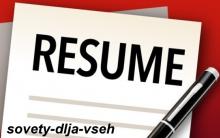
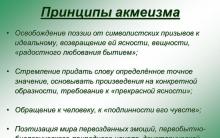
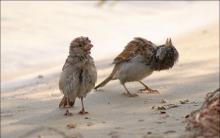
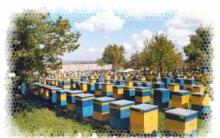
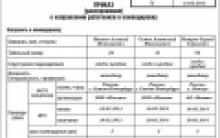





What should a retired woman do to earn money?
What is the punishment for illegal business activities?
VET engineer: job description (sample) Regulations on VET at a mining enterprise
Arkady Rudoy, UGMK: “now all manufacturers are banging on one door
Club of Rome in the political world